Contenido - Contents
Fotos de Bhaktin Nina - Jay JayAnanda!!!  Añadida el 09 de junio  The Cc Antya 7.11 it is stated, 'The fundamental religious system in the Age of Kali is the chanting of the holy name of Krishna. Unless empowered by Krishna, one cannot propagate the sankirtana movement.' Because of the genuine compassion in Jayananda, Krishna gave Him the unique ability to make people want to render devotional service, directly or indirectly.  Jayananda had almost no possessions, even during his years as a householder. What ever he had, he used for the service of the temple and Srila Prabhupada. When he was gifted five thousand dollars, he promptly donated that to Srila Prabhupada. In the introduction of the Nectar of Devotion, Srila Prabhupada acknowledges this contribution. For many years he was almost single handedly supporting the temple by driving his cab for 12-14 hours a day. When he was in his last days of his life, he used the money given to him for his treatment to support the Ratha-yatra in Los Angeles.  Añadida el 09 de junio Añadida el 09 de junio Añadida el 09 de junio Añadida el 09 de junio Humility was certainly Jayananda's most prominent quality. He treated everyone as his superior, even new devotees. Although his service was glorious, he never wanted any glory. He avoided praise like the plague. Devotees got to know that if they wanted to keep Jayananda's association they would better not praise him. His humility was very natural and he always found something other than himself that was praiseworthy. Even though he was a senior devotee, older than most of the people around him and eminently qualified, he was happy to simply serve.  Manorupa Dasi 05 de julio a las 19:01 In 1968, in the Golden Gate Park my Gurumaharaja, HG Srila Jayapataka Swami met Srila Prabhupada's disciples for the first time ... that's another wonderful story ...(telling this I'm trying my best to use his exact words...) looking for the devotees everywhere he finally saw a poster about the Ratha Yatra Festival with the temple address. Upon ... Ver másarriving at the 'temple' he saw a group of young men, some with shaved heads and sikhas working on a wooden structure ... Prabhu Jayananda welcome him with great enthusiasm .... "Hey, come on in. We're having a festival. Ratha Yatra Festival." "He sounded like the festival was already going on! All I could see was a few 'Two-by-Fours' nailed together!" ... "Come here... hold this nail!" ... and he hammered the nail in ... "Wow! You held that nail real straight! Are you a professional carpenter?" ... "And sure enough within minutes I was there, hammering away, building the Ratha for Jagannatha! And on Ratha Yatra Day Jayananda Prabhu shaved me up for the first time" .... telling this he touched his head, smiling: "This head is blessed!"  His preaching style was very simple and direct. He would speak from the heart to the heart. Once he was preaching to a couple of hippies, while crawled under an automobile. All that was visible of him was a pair of legs, yet the two hippies stood there, transfixed by his message. During Ratha-yatra time he would organize a crew of cynics, hippies, bloopers, uncooperative personalities and non-devotees off the street to help build the carts. He would get them to work for ten to fourteen hours a day, always glorifying them.  In the Vishnu purana, Sri Krishna informs Arjuna that 'one who claims to be My devotee is actually not My devotee. One who claims to be the devotee of my devotees is in actuality My devotee'. Jayananda completely manifested this quality. He was always striving to be he 'dasanudasa', the servant-of- the-servant. But there was no artificial humility in him. Material humility is relative, it is predicated on the qualifications of the recipients. Jayananda had spiritual humility, it was absolute, without any consideration of the status or qualities of the recipient. He served every one and expected no one to serve him. Contenido - Contents Fotos de Gauranga Sundara Das  Añadida el 26 de noviembre de 2009  Añadida el 05 de noviembre de 2007 Yoga-piùhaContenido - Contents En el rdhvamnaya-tantra el yoga-piùha se conoce por los nombres siguientes: sri ratna-manàapa, el elegante trono enjoyado, srngara-manàapa, el trono de amor conyugal, saubhagya-manàapa, el trono de la buena fortuna, maha-madhurya-manàapa, el trono de extraordinaria dulzura, samrajya-manàapa, el trono de la soberanía universal, kandarpa-manàapa, el trono de cupido y ananda-manàapa, el trono de la felicidad. En los procedimientos paddhatis o sadhana establecidos por Ärî Gopala-guru Gosvâmî y Ärî Dhyanacadra Gosvâmî se hace una descripción detallada del yoga-piùha. Rodeando a Ärî Ärî Râdhâ-Kèëòa en el centro del loto hay seis petalos. Sobre estos petalos se encuentra el asùadasaksara-mantra (klim Kèëòaya-govindaya gopijanavallabhaya svaha). Rodeando esto hay ocho petalos en los que están situadas las ocho mañjaris principales asistentes de Ärîmatî Radhika. Comenzando por el norte y siguiendo en el sentido de las agujas del reloj, sus nombres son Rupa Mañjari, Rati Mañjari, Labanga Mañjari, Rasa Mañjari, Guna Mañjari, Mañjulali Mañjari, Vilasa Mañjari y Kasturi Mañjari. Estas forman estambres de ocho petalos. Situadas en el exterior de esos petalos se encuentran las asùa-sakhis o parama-presùha-sakhis, las amigas más queridas de Ärîmatî Radhika. Las ocho mañjaris principales están cada una bajo la protección y la guía de estas ocho amigas íntimas de Ärî Râdhâ. Siguiendo con el mismo orden de antes, sus nombres son Lalita, Visakha, Citra, Indulekha, Campakalata, Rangadevi, Tungavidya y Sudevi. Rodeando esos petalos hay ocho petalos más sobre los que se encuentran otras ocho sakhis. Cada uno de estos petalos está entre los petalos de las asùa-sakhis. Comenzando al noreste de Lalita, sus sombres son Ananga Mañjari, Kalavati, Subhangada, Hiranyangi, Ratnarekha, Sikhavati, Kandarpa Mañjari y Phulla-mallika. En las cuatro direcciones hay cuatro puertas al yoga-piùha, y en esas puertas hay cuatro sakhis más. Comenzando por el norte, sus nombres son Murala, Vrnda, Vrndarika y Mena. Dhyanacandra Gosvâmî, citando del Caitanyarcana-candrika, ha dado tambien una descripción del yoga-piùha de Navadvipa. Ärî Gauracandra está en el centro. A su izquierda está Ärî Gadadhara y a Su derecha, sosteniendo una sombrilla, está Ärîvasa. Frente a El a Su derecha está Ärî Nityananda, y frente a el a Su izquierda está Ärî Advaita. Sus devotos Le rodean por todas partes. The Temple of Vedic Planetarium, Mayapur, India 1º The Temple of Vedic Planetarium, Mayapur, India 2º Contenido - Contents
Contenido - Contents Title: Shri Yogapitha User: Swami Gaurangapada Date: 2007-03-13 20:41:19 Nityananda!Gauranga!Hare Krishna! Gurudeva,please accept my humble obiesances at the dust of your lotus feet. I have a question regarding Shri Yogapitha.Yogapitha is eternal residence of Supreme Personality of Godhead,its present in Navadvipa Dhama since beginning of time. What is the exact meaning of Yogapitha? What is the name of place of residence(home) of Lord Krishna in Shri Vrindavana Dhama? The Glories of SHri Navadvipa dhama are endless.but the Glories of Shri Yogapitha will be more glorious as Lord Gauranga appeared and personally stayed There with His intimate devotees.please tell us the Glories of Shri Yogapitha. aspiring to be your humble servant Bhushan Nityananda dasa Nityananda!Gauranga!Hare Krishna! Answer by Swami Gaurangapada: Nityananda! Gauranga! Hare Krishna! Please read the glories of Shri Yogapitha in Shri Navadvipa Dhama Mahatmya in the VaniBase. Yoga means union and pitha means the sanctuary. The place where the soul is united in the direct service of the Pancha Tattva in Navadvipa and the Divine Couple in Vrindavana is known as Yogapitha. Also it is known as the Yogapitha because it is the eternal meeting place of Lord Gauranga and His Associates and of Shri Shri Radha Krishna. There is a divine Yogapitha in Shri Ekachakra and Shri Puri Dhaam as described by Shrila Narahari Chakravarti Thakura in Bhakti Ratnakara. Places Visited on Braja Mandala Parikrama:
http://krishnastore.eu/braj-mandala-parikrama-the-complete-guide-h-krishna-1482.html ISKCON desire tree - Sri Krishna Kathamrita - Bindu 110 ISKCON desire treeThis ebook is compiled by ISKCON desire tree for the pleasure of Srila Prabhupada and the devotee vaishnava community. Media - ebooks derived from vedic or hindu teachings. For morevisit http://www.iskcondesiretree.com ISKCON desire tree - Sri Krishna Kathamrita - Bindu 110 ISKCON desire tree published this 04 / 27 / 2009 ISKCON desire tree - Sri Krishna Kathamrita - Bindu 110 Fuentes - Fonts SOUV2P.TTF - 57 KB SOUV2I.TTF - 59 KB SOUV2B.TTF - 56 KB bai_____.ttf - 46 KBbabi____.ttf - 47 KB bab_____.ttf - 45 KB SOUV2T.TTF - 56 KB inbenr11.ttf - 64 KB inbeno11.ttf - 12 KB inbeni11.ttf - 12 KB inbenb11.ttf - 66 KB balaram_.ttf - 45 KB indevr20.ttf - 53 KB Página PRINCIPAL OBRAS y AUTORES CLÁSICOS Agradecimientos Cuadro General Disculpen las Molestias
Sri Garga-Samhita | Oraciones Selectas al Señor Supremo | Devotees Vaishnavas | Dandavat pranams - All glories to Srila Prabhupada | Hari Katha | Santos Católicos | JUDAISMO | Buddhism | El Mundo del ANTIGUO EGIPTO II | El Antiguo Egipto I | Archivo Cervantes | Sivananda Yoga | Neale Donald Walsch | SWAMIS jueves 11 de marzo de 2010ENCICLOPEDIA - INDICE | DEVOTOS FACEBOOK | EGIPTO - USUARIOS de FLICKR y PICASAWEB |

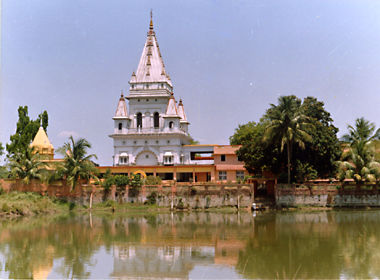

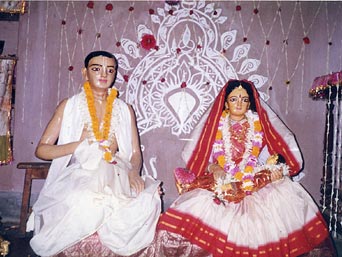
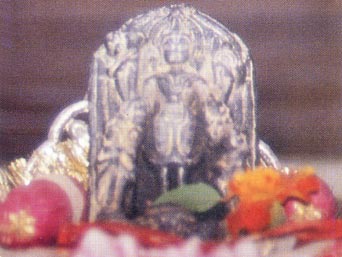

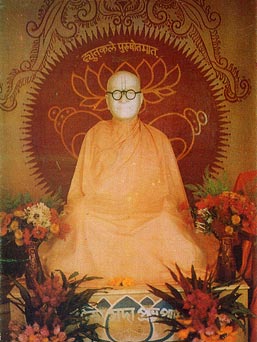
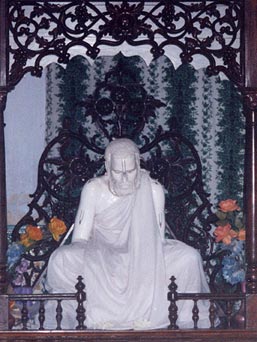


No hay comentarios:
Publicar un comentario